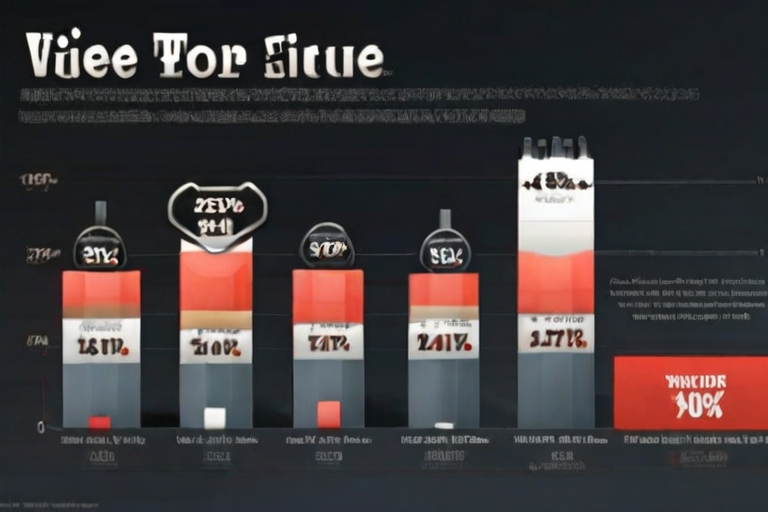Crafting compelling product descriptions is essential for boosting both search engine rankings and conversion rates. Effective descriptions do more than inform; they engage and persuade potential buyers, transforming casual visitors into loyal customers. At Metrics Rule, we understand the importance of merging SEO strategies with captivating content to enhance your e-commerce listings. In this article, we’ll explore ultimate strategies that will empower you to write product descriptions that rank high in search results and drive meaningful sales.
The Role of Product Descriptions in E-commerce Success
Effective product descriptions are essential for e-commerce success. They are designed to provide key information, engage potential buyers, and persuade them to make a purchase. Key elements include clear product features, benefits, and accommodations for customer needs. By enhancing the customer experience through detailed and informative descriptions, businesses can significantly improve their conversion rates. Research indicates that optimizing product descriptions can lead to an increase in conversion rates by up to 30%. By focusing on SEO optimization, businesses can also enhance visibility, ensuring their products are more easily found through search engines like Google and Bing.
Components of Compelling Product Descriptions
To create compelling product descriptions, it’s vital to include information about product features and benefits. High-quality descriptions should capture essential features while addressing potential customer questions. Using engaging language and keywords can improve SEO, helping products rank better in search results. Incorporating customer reviews can also enhance reliability and trustworthiness, which are crucial for converting visitors into buyers. Overall, a well-crafted product description not only informs but also builds a positive experience that encourages purchases and repeat business.
Essential Components of Compelling Product Descriptions
Compelling product descriptions include essential elements such as storytelling, clear features, and persuasive writing techniques. Storytelling engages customers and establishes a connection with the product. By highlighting product features and emphasizing benefits, you convey the value effectively. Data shows that high-quality product descriptions can increase e-commerce conversion rates significantly. Incorporating keywords like “compelling product descriptions” and “persuasive writing techniques” helps improve search engine visibility, driving more relevant traffic to your listings.
Utilizing Storytelling Techniques to Enhance Descriptions
Using storytelling techniques enhances product descriptions by creating an emotional connection with potential customers. When you weave a narrative around a product, such as how it’s made or real-life scenarios it solves, customers visualize themselves using it. This technique not only makes the product memorable but also increases trust in its reliability. Consequently, storytelling helps improve e-commerce conversion rates, enabling businesses to stand out in a competitive online market.

SEO Strategies to Optimize Product Descriptions
Effective keyword usage is essential for enhancing the visibility of your product descriptions. Start by conducting thorough keyword research to find high-ranking keywords related to your product. Aim to incorporate these keywords naturally throughout your content, especially in headings and the first paragraph. The role of meta descriptions cannot be overlooked—they should summarize the product accurately while including target keywords to improve click-through rates. Ideally, you should include 3 to 5 keywords in your product descriptions to optimize for search engines without resorting to keyword stuffing.
Importance of Content Structure in SEO
A well-structured content layout significantly enhances SEO performance in product descriptions. Begin with a clear and engaging introduction that incorporates primary keywords, then use bullet points or sub-headers to break down product features. This makes it easier for both users and search engines to read and understand the description. Moreover, a logical structure helps in ensuring proper crawling and indexing by search engines, which is crucial for visibility. By focusing on content structure strategies, you can create descriptions that not only attract users but also convert them into customers.
Numerical Insights on Effective Writing Techniques
- 70% of consumers read product descriptions before making a purchase.
- Product listings with detailed descriptions can increase sales by 30%.
- SEO-optimized descriptions can boost search engine visibility by up to 50%.
- 75% of shoppers prefer detailed descriptions over images when deciding.
- Only 20% of businesses utilize effective strategies for product descriptions.
- Optimized content can improve engagement time on product pages by 40%.
- 67% of buyers seek clear, concise information to avoid confusion.

Common Errors to Avoid When Writing Descriptions
When writing product descriptions, several common errors can severely hinder their effectiveness. One frequent mistake is using overly technical jargon that alienates potential buyers. Instead, aim for straightforward language that conveys your product’s features. Additionally, neglecting to include essential keywords can undermine your search engine optimization (SEO) efforts. Be sure to integrate relevant keywords naturally to improve visibility. Lastly, failing to address customer needs and benefits often leads to missed conversion opportunities. Always highlight how your product solves a problem or enhances the buyer’s life, ensuring it resonates well with potential customers.
Tips for Revamping Your Product Descriptions
To revamp your product descriptions effectively, focus on clear communication, relevance, and engaging content. Start by conducting thorough research to understand what features and benefits appeal most to your target audience. Ensure that your descriptions are designed to answer common customer questions and provide reliable comparisons with similar products. Incorporate important keywords that are integral to e-commerce and SEO strategies to boost your rankings on search engines. This approach not only enhances user experience but also drives higher conversion rates. By testing different formats and styles, you can find the best way to present your product, allowing you to fine-tune your approach for optimal results.

Leveraging Customer Feedback for Better Descriptions
Customer reviews play a crucial role in enhancing product descriptions. They provide social proof that builds trust among potential buyers. Integrating positive feedback directly into your product descriptions helps convey reliability and quality. Include testimonials that highlight specific features or experiences related to the product. This method not only enhances credibility but also addresses common consumer concerns, ensuring a well-rounded view of the product. Research shows that around 79% of consumers trust online reviews as much as personal recommendations. Thus, you can increase your chances of converting visitors to buyers by incorporating product reviews effectively.
Incorporating Customer Experiences into Descriptions
Incorporating customer experiences into product descriptions can dramatically enhance the overall quality of your listings. Using feedback, you can highlight key features that customers appreciate, such as durability or ease of use. Offering specific examples from user reviews allows potential buyers to visualize how the product meets their needs. This strategy not only boosts consumer trust but also directly influences purchasing decisions, thereby improving conversion rates. Utilizing a mix of positive and constructive reviews can ensure a balanced narrative that addresses various customer sentiments, ultimately driving sales in the e-commerce landscape.
Advantages of Crafting Descriptive Content
- Higher ranking in search engines leads to increased traffic.
- Compelling descriptions enhance customer trust and credibility.
- Effective writing decreases bounce rates and retains visitors.
- Clear and informative descriptions improve conversion rates significantly.
- Well-crafted content helps highlight unique selling points of products.
- Optimized descriptions simplify user navigation and enhance UX.
- Strong descriptions encourage repeat purchases and customer loyalty.

Integrating Brand Narrative into Product Descriptions
Integrating a brand narrative can significantly enhance product descriptions. A compelling narrative helps create an emotional connection with customers, thereby enhancing customer engagement. By weaving your brand values into the description, you deepen customer loyalty. For instance, brands like Patagonia and Apple excel at using storytelling to highlight their mission and values, making their products more appealing. The ideal product description length for effective SEO typically ranges from 100 to 300 words, balancing detail with conciseness for optimized searchability.
Key Elements of Effective Brand Storytelling
To create impactful brand storytelling within product descriptions, focus on key elements such as authenticity, emotions, and specific values. Authentic storytelling resonates more with customers, making them feel connected to your brand. Emphasize emotions that align with your product benefits; for example, sharing how a sustainable product helps save the environment can evoke positive feelings. Additionally, ensuring that your description reflects your brand values, such as quality and reliability, establishes credibility and trust among potential buyers. This tailored approach not only drives conversions but also enhances overall customer satisfaction.
Analyzing and Optimizing Product Description Performance
To effectively track the performance of your product descriptions over time, start by using tools like Google Analytics and heatmap software. These platforms help measure user engagement and behavior on your product pages. You’ll want to focus on key metrics such as conversion rates, bounce rates, and average time on page. Also, consider customer reviews and ratings, as they provide invaluable data on the perceived quality of your product descriptions. For a comprehensive analysis, track these metrics monthly to identify trends and make informed improvements.
Essential Tools for Measuring Performance
When optimizing your product descriptions, having the right tools for measuring their performance is essential. Google Analytics offers insights into user interactions, while tools like SEMrush can help assess keyword effectiveness within your e-commerce listings. You should also review user feedback from platforms like Trustpilot to gauge consumer sentiment. Analyzing these metrics enables you to make data-driven decisions that enhance the quality and effectiveness of your product listings, ultimately improving conversion rates and benefiting your e-commerce store.
Brands and Their Strategies in Descriptive Writing
- Amazon leverages extensive product descriptions to satisfy user queries.
- Shopify provides templates that enhance e-commerce writing easily.
- eBay showcases customer reviews to support product descriptions.
- Etsy highlights unique features and stories behind handmade products.
- Walmart combines fair pricing with clear descriptions for mass appeal.
- Target uses conversational tone to connect better with shoppers.
- Best Buy focuses on technical specs in their product descriptions.
Adapting to E-commerce Trends in Product Description Writing
The landscape of e-commerce is always changing, driven by new consumer preferences, technology advancements, and market dynamics. Recent trends show a shift toward personalized shopping experiences where engaging product descriptions play a crucial role. Businesses need to adapt by creating descriptions that resonate with their target audience. For instance, shorter, more visual descriptions are now more appealing, reflecting the fast-paced nature of online shopping. Additionally, advancements like AI and data analytics help to tailor these descriptions based on consumer behavior and preferences, ensuring they are both relevant and effective. Research indicates that about 70% of online shoppers read product descriptions before making a purchase, emphasizing the importance of informative and compelling content.
Emphasizing Visual and Interactive Elements in Product Descriptions
Modern consumers engage more with visual and interactive elements in product descriptions. As e-commerce continues to evolve, incorporating images, videos, and 360-degree views enhances user experience significantly. This strategy improves engagement by making product features relatable and easier to understand. Such content is essential for increasing conversion rates, as it provides potential buyers with comprehensive insights into the product. Marketers should focus on creating engaging product descriptions that include these visual elements, thereby optimizing for both customer experience and SEO. Overall, adapting to these trends and emphasizing multimedia in descriptions not only meets consumer expectations but also positions brands like Metrics Rule for greater success in the digital marketplace.
